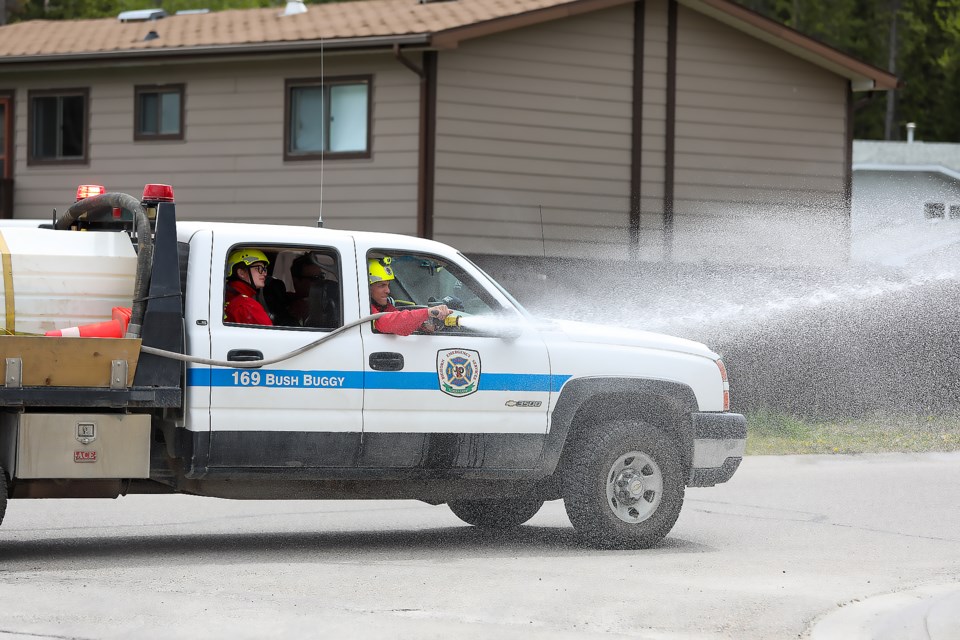MD OF BIGHORN – An ongoing review of fire service levels in the MD of Bighorn could see the municipality expand its fire service to offset the need to receive help from neighbouring municipalities.
Bighorn’s governance and priorities committee received information from municipal staff on the potential to add three full-time firefighters to its existing composite fire service of full-time, casual and paid on-call firefighters.
“We believe this will help us deliver more expedient daytime responses to both Exshaw and surrounding communities and also alleviate some of the service demand we’ve placed on our neighbours through fire response agreement,” said Andrew Box, Bighorn’s director of protective services and fire chief.
Box noted the level of service for the public is ultimately set by council through policy or bylaws.
Bighorn’s fire service policy outlines specific responsibilities for different positions in the MD as well as levels of service for specific types of calls ranging from structural, rescue and emergency responses. It also notes when mutual aid agreements should be established, outlines fire prevention services and gives definitions to specific roles.
“As administration, what we’re able to do is utilize our best knowledge, the tools we have at this side of the table and propose a policy as a starting point for the discussion,” said Bighorn CAO Shaina Tutt. “This is using the information we have available to us. The policy is proposed now and the conversations we have at governance and priorities level and again at council table, those discussions and any amendments, are what set the level of service as a policy through direction of council to the public.”
A council workshop on levels of service was held Jan. 31, 2024.
Box said Canmore Fire-Rescue responded to about 60 calls per year in the MD. He said roughly half of those were during the day and between Mondays to Fridays.
“It would be an additional 30 calls per year,” said Box, adding municipal staff have had talks with paid on-call firefighters about having them respond in off hours for expanded service, and interest had been expressed.
He noted the municipality hired its first full-time firefighter last year with deputy chief Rob Duffy.
The level of service report noted “emergency response cannot be guaranteed for each and every emergency incident that arises … to respond to every call for assistance received in a timely and safe manner” because of limited resources and staffing.
It added the large geographical size of Bighorn, difficulty reaching remote areas, weather conditions, and multiple incidents potentially taking place are also factors that could inhibit response times.
Bighorn’s fire services level of service states municipal council “recognizes that within the municipal boundaries of the MD that residents and visitors can be exposed to a variety of dangers from fire and other emergencies.”
In October, Bighorn’s GPC received a fire services risk assessment that recommended improved emergency vehicle access between the Trans-Canada Highway and Highway 1A with a bridge or tunnel across the Bow River. It also recommended three full-time firefighters and a deputy fire chief be hired.
The review came after council directed municipal staff to look at better fire services, but also dissatisfaction with the price hike in the mutual aid agreement with Bighorn and the Town of Canmore in 2022.
A fire risk assessment last October found it would be riskier and more costly for the MD to not revisit its mutual aid agreement with Canmore. It led to the MD analyzing potential fire service options, rather than relying on Canmore Fire-Rescue for service calls.
Municipal staff previously told the committee the cost-sharing agreement between the Town of Canmore and the MD of Bighorn increased by 109 per cent between 2017-22.
Box also told the committee at the October meeting the mutual aid agreement would likely surpass $300,000, which was the cost of more than two full-time firefighters.
From Exshaw Fire Hall to Lac Des Arcs is a 19-minute travel time, not including muster time for paid volunteers to get to the station which averages between eight to 10 minutes. However, the distance if a bridge permitted vehicle traffic over the Bow River would be 600 metres.
The MD has a full-time fire chief, three district chiefs and more than 50 paid on-call firefighters. Statistics in November found over the previous three years, Bighorn had four paid on-call firefighters 69 per cent of the time.
The review emphasized the geographical challenges of Bighorn, with it covering a significant amount of land.
Any decision and its resulting budget implications would need council approval before moving forward.
“It’s a big decision,” said Bighorn Reeve Lisa Rosvold.
CORRECTION: The original story incorrectly stated call volume responded to by Canmore Fire-Rescue had increased by 109 per cent between 2017-22, but it was the cost of the agreement between the Town of Canmore and the MD of Bighorn. The article has been corrected and the Outlook apologizes for the error.




